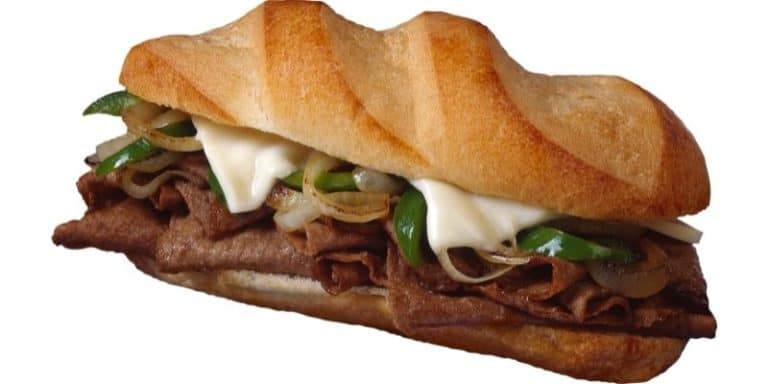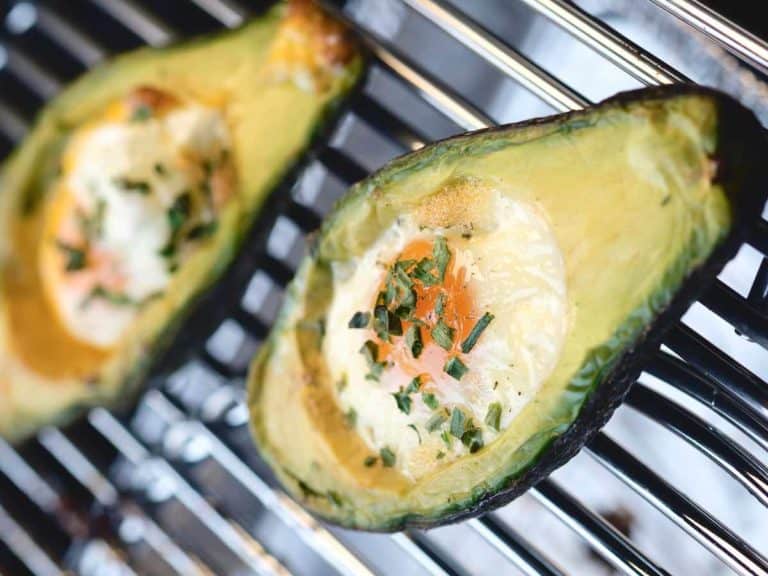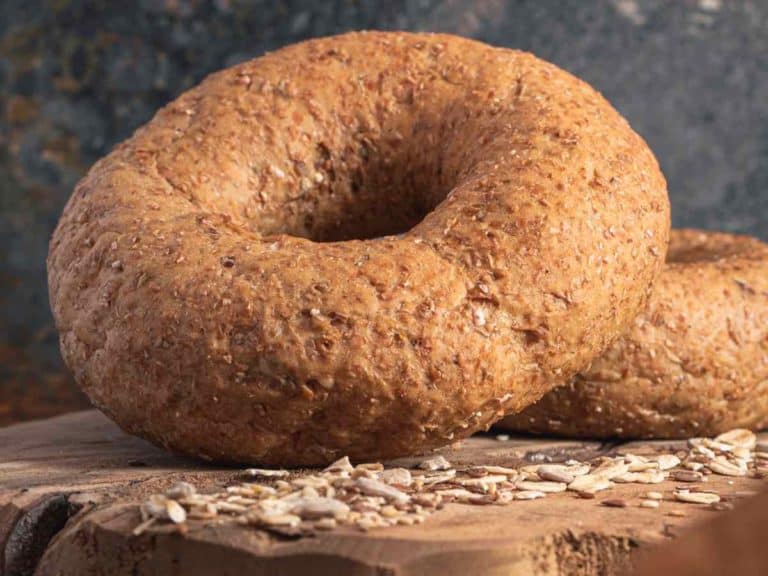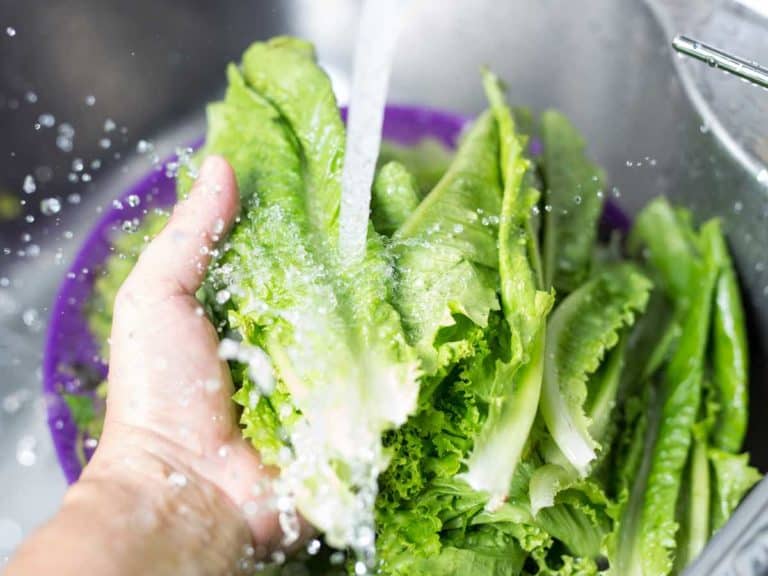Difference Between Gravy, Jus, and Sauce
Fried chicken is already good, but you can make it better with gravy. Meanwhile, you can’t imagine eating a pasta dish without the sauce.
Both dishes need that flavorful liquid to complete the eating experience. But have you wondered about the difference between gravy and sauce?
The word “sauce” is a term that includes gravy. A sauce is a liquid, cream, or semi-solid mixture that is used in preparing other foods or served with other foods. As you can tell, that definition also covers gravy. But more specifically, a gravy is a thickened sauce made from meat juices.
Keep reading below to know more in detail what makes gravy different from other sauces like jus. You’ll also learn sauce and gravy recipes.
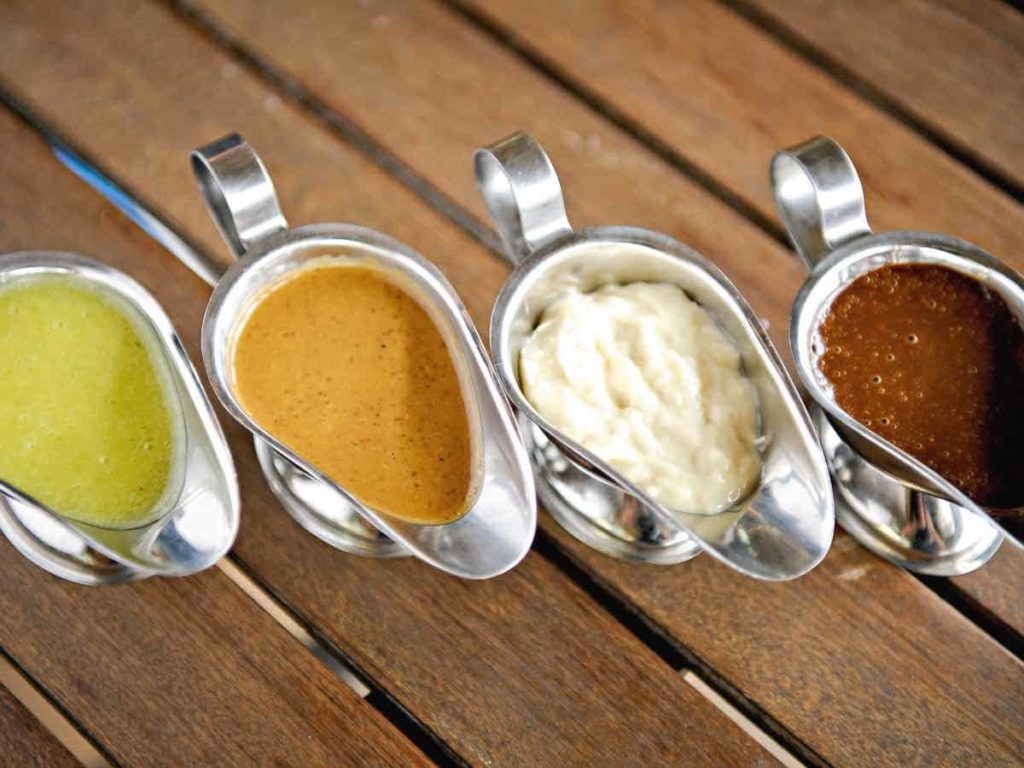
What Is A Sauce?
The word “sauce” is a French word that is taken from the Latin word “salsus” which means “salted”.
Although the word is European, the concept is prevalent throughout the world. For example, you can find sauces in dishes of different cultures in Asia and Africa.
In Latin/Spanish America, salsa is a popular sauce. For example, in Japan, many sauces use soy sauce, miso, or dashi as the base. Pepper sauce is a popular spicy sauce in West Africa. Hummus is a sauce that originates in Central Asia.
With such diversity, we can’t say how to specifically make a sauce, and that is a good thing. It allows for flexibility in making a sauce.
All we can do is give a general description of what it is, which is a cream, liquid, or semi-liquid mixture. It is then up to human creativity and diversity to make it as fun and delicious as the food sauces are served with.
What Is A Gravy?
Gravy is a specific kind of sauce that uses meat juices as the base. From the meat juices, you can prepare gravy by cooking it with other liquids, like broths.
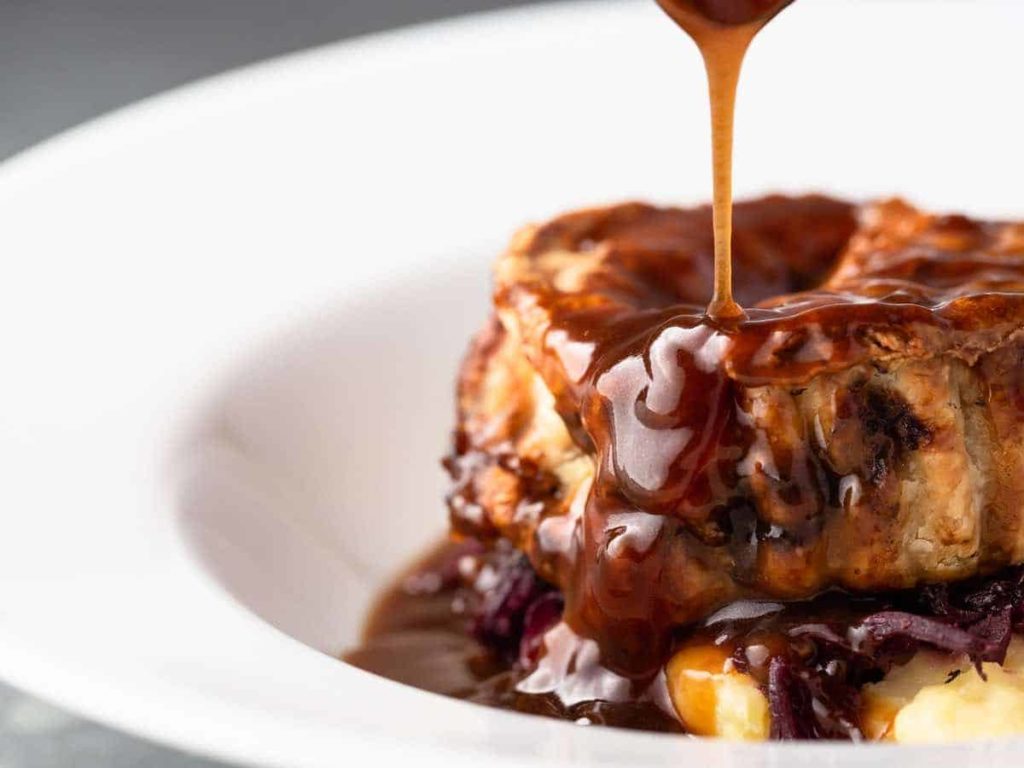
You can flavor a gravy by cooking it spices, herbs and other ingredients. You then complete a gravy by thickening it with a thickening agent like flour or cornstarch.
Just from that definition alone you might think that a gravy is for savory dishes only. You’d be wrong. Cooks don’t do well with rules because rules tend to limit their creativity.
That is why you get foods that don’t fall under “traditional” culinary rules, like fusion cuisine. Hence, it shouldn’t be surprising that there are sweet gravies for dessert.
What Is A Jus?
Jus (pronounced zhoo) is French for “juice”. It is almost similar to gravy in that jus is also made from meat juices. The main differences is that jus isn’t thickened. On the contrary, it is reduced until it gets the desired consistency, which is thinner than that of gravy.
Sauces You Need to Know: The Mother Sauces
If you intend to be doing any cooking in your life, then you need to put sauce-making into your arsenal. Below are common sauces that you can start with.
These same sauces are also called the “mother sauces” in French cuisine. They get their name because they are used in several other dishes.
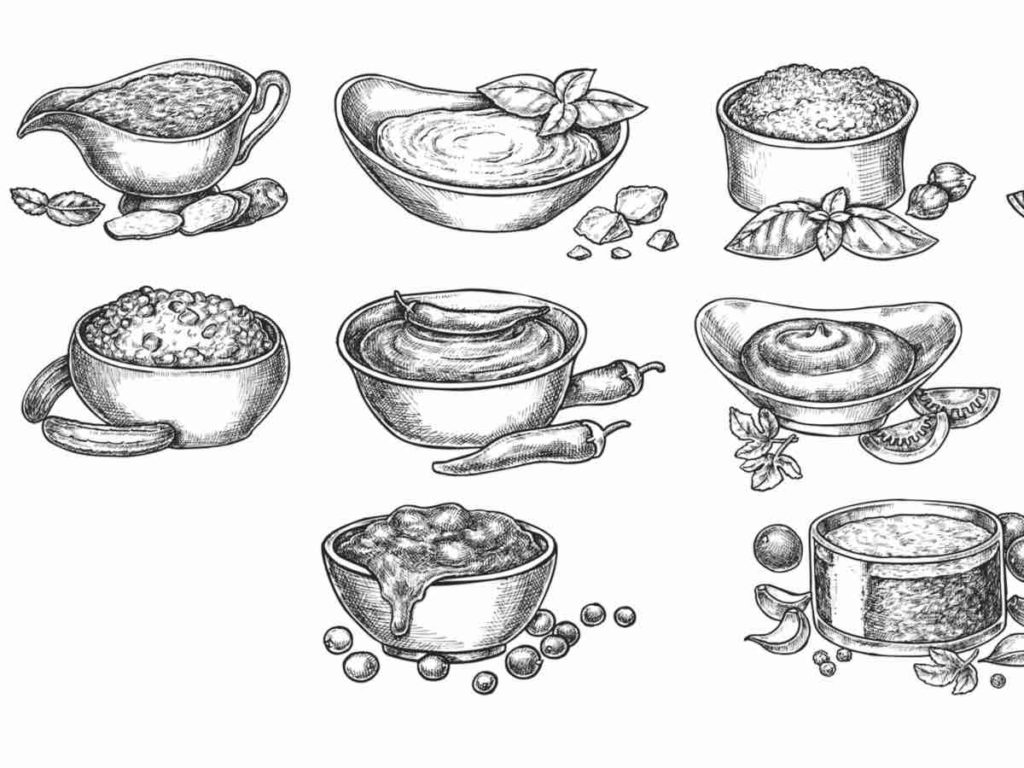
Béchamel Sauce
Béchamel sauce is called besciamella in Italy and besamel in Greece. In the US, people just call it white sauce because that’s exactly what it is.
Béchamel gets its white color because of its three main ingredients: butter, milk, and flour. If you’re lactose intolerant or vegan, you’ll also learn a dairy-free version below.
Basic Béchamel Sauce
Below is a recipe for 1 cup of béchamel sauce. The ingredients are:
- 2 tbsp butter
- 2 tbsp flour
- 1 and 1/4 cups milk hot or warm)
- Salt and pepper to taste
Melt the butter in a pot or saucepan under low heat. When it’s melted, add the flour. Cook and stir continuously until the resulting paste gently bubbles. This step can take about a minute or two.
Be careful not to let the mixture turn brown. Add the milk. Continue stirring until the sauce thickens. Add salt and peppe. When everything is mixed, turn off the heat and let it cool.
Now you have a basic béchamel sauce. From here, you can make it better by adding other ingredients. You use sweet onions, cloves, nutmeg, and other spices.
Vegan Béchamel Sauce
You can follow the same proportions as before for the vegan version.
Instead of dairy milk, you can use any plant-based milk you like. Béchamel sauce has different applications. Hence, the appropriate plant-based milk may depend on the application of the sauce. Feel free to experiment which plant-based milk goes well for which purpose.
Instead of butter, you can use vegan butter. If you don’t have vegan butter, you can use oil. You can also add the common ingredients in vegan butter, like blended cashews and apple cider vinegar.
Velouté
Velouté is a savory sauce that consists of a roux and a stock. If you’re unfamiliar, a roux is flour and fat cooked together. You can use any fat, like a vegetable oil, butter, or lard.
How To Make Roux
Heat the fat in a pot or saucepan then stir in the flour. Continuous stirring is important. Otherwise, you might burn your roux. If you get an acrid and unpleasant smell, like burnt popcorn, then you burned your roux. The roux will gradually brown. The end color is chocolate brown.
However, when making velouté, you add in your stock when the roux is just turning gold. Keep stirring as you add the stock. Continue until you get a silky-smooth consistency. You may season with salt and pepper and flavor with other ingredients.
Below are the basic ingredients for a velouté.
- 3 tbsp fat of choice
- 3 tbsp flour
- 2 cups of stock of choice.
Espagnole
Espagnole (pronounced Espanyol) is a brown sauce that consists of a roux and stock. It’s different from velouté because it is made with a brown stock, usually beef stock. It also has extra ingredients that give it its distinct brown color, as well as flavor. These additional ingredients are tomato purée and mirepoix.
A mirepoix is a French flavor base that consists of sautéed chopped vegetables. The usual vegetables are onion, carrot, and celery. The usual ratio is 2 parts onion, 1 part carrot, and 1 part celery. If you also noticed, these vegetables are aromatic.
The recipe below is for 3 cups of Espagnole:
- 1 cup mirepoix
- 1/4 cup of fat of choice (ex. oil or butter)
- 1/4 flour
- 4 cups hot beef stock
- 1/4 cup tomato purée
- 2 large garlic cloves, coarsely chopped
- 1/2 tsp whole black peppercorns
- 1 bay leaf

How To Make Mirepoix
The first step in this recipe is making the mirepoix.
Prepare the vegetables by rinsing them and trimming off the roots. You have the option of peeling the carrots. Chop the vegetables. This mirepoix will be used for a sauce, so you can chop the vegetables into 1-inch pieces.
Cook the vegetables over medium-low heat with the fat. Cook until the vegetables soften or when the onions become translucent. Adjust the heat to keep vegetables from browning.
If you’re just making mirepoix, you stop the process there. For Espagnole though, you continue by adding the flour and roux while stirring. Continue cooking until you get a medium brown color. Add the hot stock.
Continue stirring to prevent lumps. Add the tomato purée, peppercorns, and bay leaf. Bring to a boil then lower to a simmer. Continue simmering until you reduce everything to about 3 cups.
Since Espagnole is a sauce, you may want to remove the large solids. Pour the Espagnole through a fine-mesh sieve. You can choose to eat the vegetables separately.
Related Article: Can You Freeze Mirepoix for Later Use?
Sauce Tomate
Sauce Tomate, or tomato sauce, resembles the classic Italian tomato sauce that is served with pasta.
Below are the ingredients:
- 2 oz diced salt pork
- 2 tbsp butter
- 2 cups diced onion
- 1 cup diced celery
- 1 cup diced carrot
- 3 tbsp flour
- 1 clove garlic, minced
- 28 oz of crushed tomatoes
- 1 quart veal stock or chicken stock
- 1 bay leaf
- 1 sprig thyme
- Sugar (to taste)
- Salt and pepper
Preheat oven to 300 °F (150 °C). On a wide oven-safe pot, heat the salt pork and butter on medium heat until the fat renders. Stir occasionally. Add the onions, carrots, celery, bay leaf, thyme, and flour.
Continue stirring until the flour turns light brown. Stir in the tomatoes and stock. Bring to a boil then add the garlic, sugar, salt, and pepper. Remove the pot from the heat and transfer it to the oven.
Bake until the vegetables are soft and the sauce is concentrated. Baking should take about 90 minutes.
After baking, let the sauce cool. Then run it through a sieve to separate the vegetables, bay leaf, and thyme. You also have the option to blend everything together.
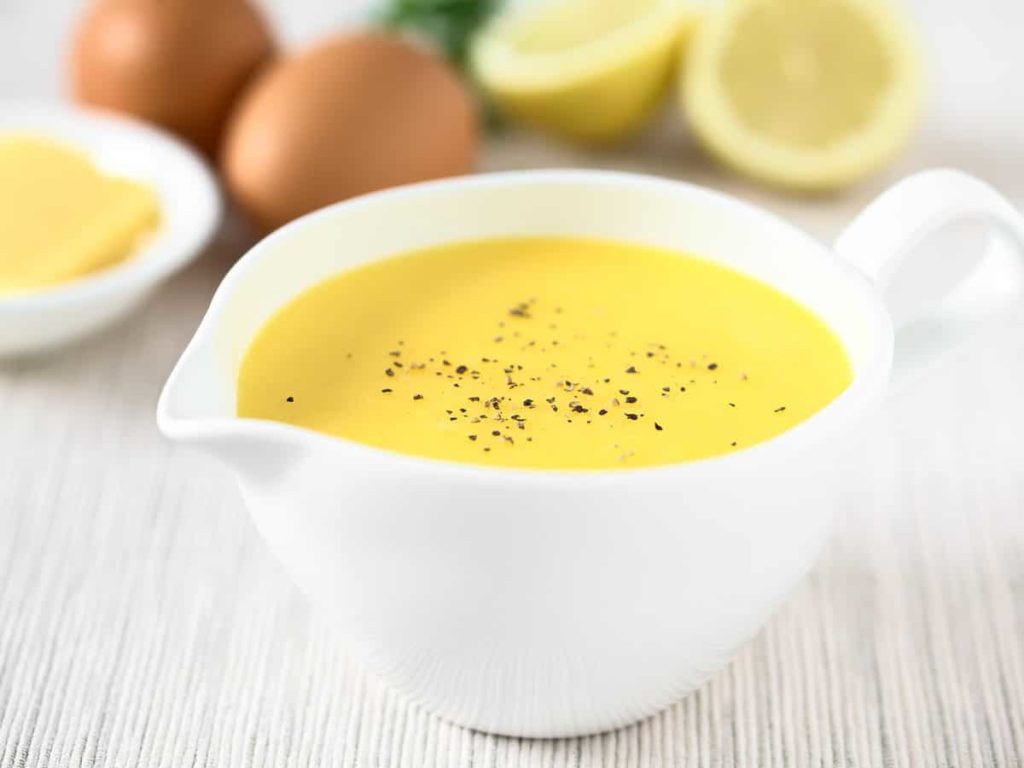
Hollandaise
Hollandaise is a creamy sauce that consists of egg yolk, butter, and lemon juice. It is a key part in eggs Benedict. It is also served with vegetables like asparagus. What makes hollandaise tricky is it’s an emulsion of fat and water.
If you recall your basic chemistry, you’ll remember that fats and water don’t naturally mix. To have them get along, you have to emulsify them. To do that, you either use an emulsifier, or you change the physical traits of the fat.
Thankfully, for hollandaise, you have both options. The egg yolk has a compound called lecithin, which acts as a natural emulsifier. Moreover, to make hollandaise, you whisk the butter into the egg yolk and lemon juice.
In doing so, you disperse the butter as tiny droplets. The droplets evenly distribute around the entire mixture. In that way, you don’t see fat globules floating around. Below is a basic recipe for hollandaise
- 4 egg yolks
- 3/4 cubed unsalted butter
- 1/2 tbsp lemon juice
- 1 tsp water
- Salt and pepper to taste
- Sugar to taste
Prepare a pot with about 1 inch of simmering water. Make sure it is steaming. Place your egg yolks in a bowl that can fit into the pot of steaming water without it touching the water. Add in the lemon juice, water, salt, and sugar.
Place the bowl on the steaming pot. Whisk everything until the consistency is uniform and slightly thicker. When the mixture has thickened, continue whisking, while gradually adding the butter. Let the butter cubes melt and emulsify before adding more.
Continue until you mix in all the butter.
Hollandaise is best served fresh and warm. If you won’t consume it yet, you can place the hollandaise in a thermos to keep it warm. If you let hollandaise go cold, it gets super thick.
Gravy Recipes
Below are basic gravy recipes you can use in many savory and sweet dishes.
Savory Gravy
The good thing about this gravy is you don’t need to be cooking any meat dishes to make it. To get that savory meaty flavor, you’ll use chicken and/or beef stock. If you only have either, double the amount of what you have. Below is the recipe.
- 1 cup chicken stock
- 1 cup beef stock
- 4 tbsp unsalted butter
- 4 tbsp flour
- 1/2 tsp onion powder
- 1/2 tsp garlic powder
- Salt and pepper to taste
Mix and heat the stocks. Add the butter and continuously stir until it’s melted and mixed. Add the flour, onion powder, garlic powder, salt, and pepper. Continue stirring until everything is mixed and you get a thick consistency.
You can use this gravy for several meat dishes, like fried chicken and steak.
Sweet Gravy
Here is a sweet gravy you can serve with treats like cake. This recipe will make over 4 cups.
- 1 cup sugar
- 1/4 cup flour
- 1 egg
- 3 cups milk
- 1 tsp vanilla extract
- 1 tbsp butter
Whisk the sugar and flour together in a pot or saucepan. Mix in the egg, then gradually add the milk. Keep mixing until everything is blended. Heat the pot and bring to a boil then simmer. Stir constantly. When it boils and thickens, add the vanilla and butter. Keep mixing until the butter melts and blends. Remove the pot from the heat and let it cool.
To make a chocolate version, you can add cacao powder of dark chocolates into the simmering pot.
Vegan Versions
You can make vegan/plant-based versions of the sauces above. Swap the non-vegan ingredients with vegan ones like what you read in the béchamel sauce. You can use vegetable broth, vegan butter, and plant-based milks. For the egg yolks, you can use vegan eggs or you can try the recipe below.
Vegan Egg Yolk Substitute
Below is a vegan egg yolk recipe you can try on sauces and other dishes that call for egg yolks.
- 1 cup raw cashews (soaked for a few hours)
- 1/4 cup nutritional yeast
- 1/2 tsp black salt (AKA kala namak)
- 1/2 tsp turmeric
- 1 tbsp Dijon mustard
- 1 tsp onion powder
- 1 tsp garlic powder
Black salt is what gives this recipe an eggy flavor. If you smell black salt, you’ll swear it smells like egg. That trait is thanks to sulfur. Blend all the ingredients together. You can use a cup of the water in which you soaked the cashews.
Other vegan egg yolk recipes use chickpea flour (or gram flour)
The next time you’re cooking something, try elevating your dish by making any of these sauces.
